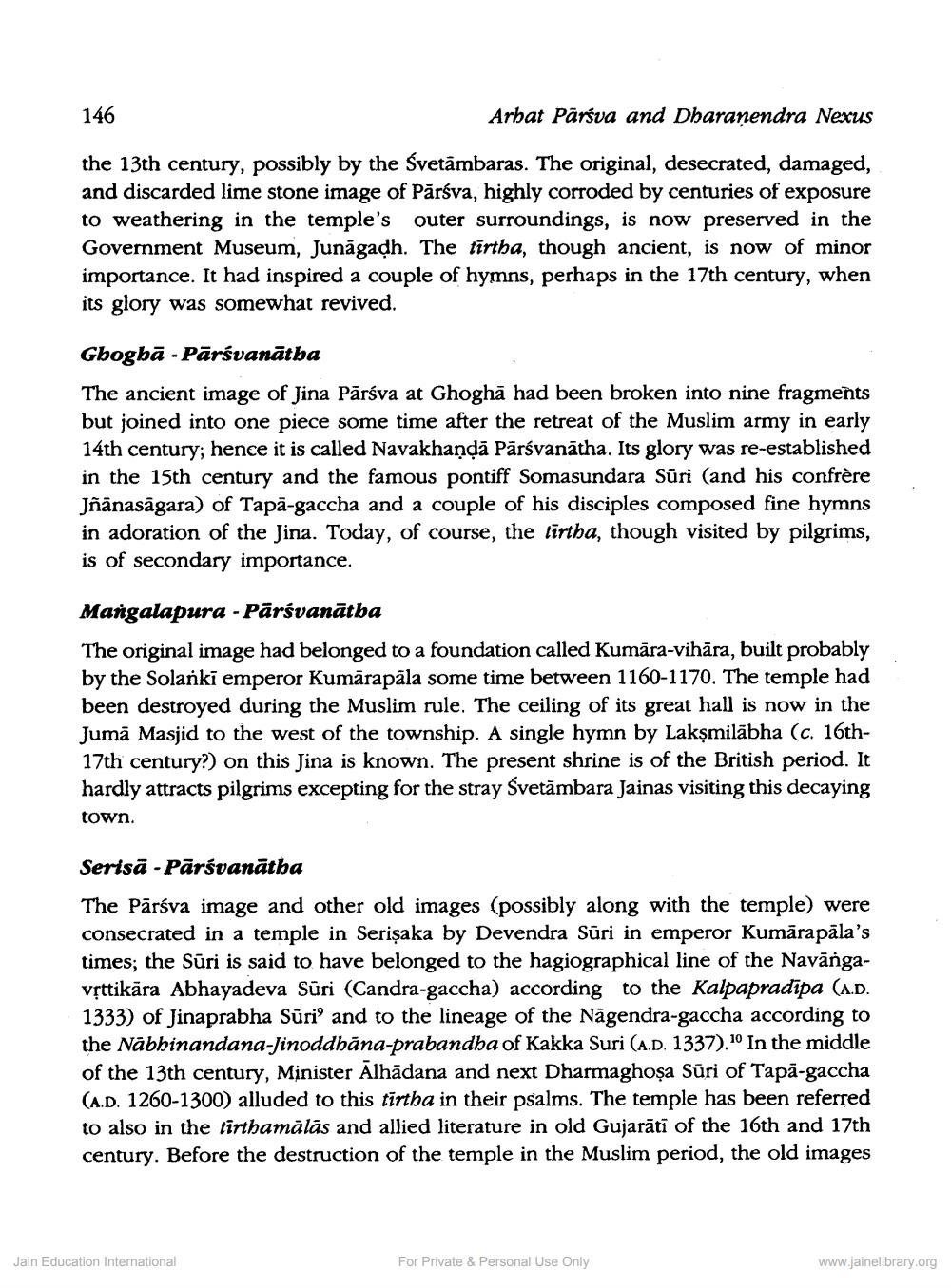________________
146
Arbat Pārsva and Dharanendra Nexus
the 13th century, possibly by the Svetambaras. The original, desecrated, damaged, and discarded lime stone image of Pārśva, highly corroded by centuries of exposure to weathering in the temple's outer surroundings, is now preserved in the Government Museum, Junagadh. The tirtha, though ancient, is now of minor importance. It had inspired a couple of hymns, perhaps in the 17th century, when its glory was somewhat revived.
Gbogbā - Pārsvanātba
The ancient image of Jina Pārśva at Ghoghā had been broken into nine fragments but joined into one piece some time after the retreat of the Muslim army in early 14th century; hence it is called Navakhandā Pārsvanātha. Its glory was re-established in the 15th century and the famous pontiff Somasundara Sūri (and his confrère Jñānasagara) of Tapā-gaccha and a couple of his disciples composed fine hymns in adoration of the Jina. Today, of course, the tirtha, though visited by pilgrims, is of secondary importance.
Mangalapura - Pārsvanātba The original image had belonged to a foundation called Kumāra-vihāra, built probably by the Solanki emperor Kumārapāla some time between 1160-1170. The temple had been destroyed during the Muslim rule. The ceiling of its great hall is now in the Juma Masjid to the west of the township. A single hymn by Lakşmilābha (c. 16th17th century?) on this Jina is known. The present shrine is of the British period. It hardly attracts pilgrims excepting for the stray Svetāmbara Jainas visiting this decaying town.
Serisā - Pārsvanātba
The Pārsva image and other old images (possibly along with the temple) were consecrated in a temple in Serișaka by Devendra Sūri in emperor Kumārapāla's times; the Sūri is said to have belonged to the hagiographical line of the Navāngavrttikāra Abhayadeva Sūri (Candra-gaccha) according to the Kalpapradipa (A.D. 1333) of Jinaprabha Sūri' and to the lineage of the Nāgendra-gaccha according to the Nabhinandana-Jinoddhāna-prabandha of Kakka Suri (A.D. 1337).10 In the middle of the 13th century, Minister Alhādana and next Dharmaghoșa Sūri of Tapā-gaccha (A.D. 1260-1300) alluded to this tirtha in their psalms. The temple has been referred to also in the tirthamālās and allied literature in old Gujarātî of the 16th and 17th century. Before the destruction of the temple in the Muslim period, the old images
Jain Education International
For Private & Personal Use Only
www.jainelibrary.org




